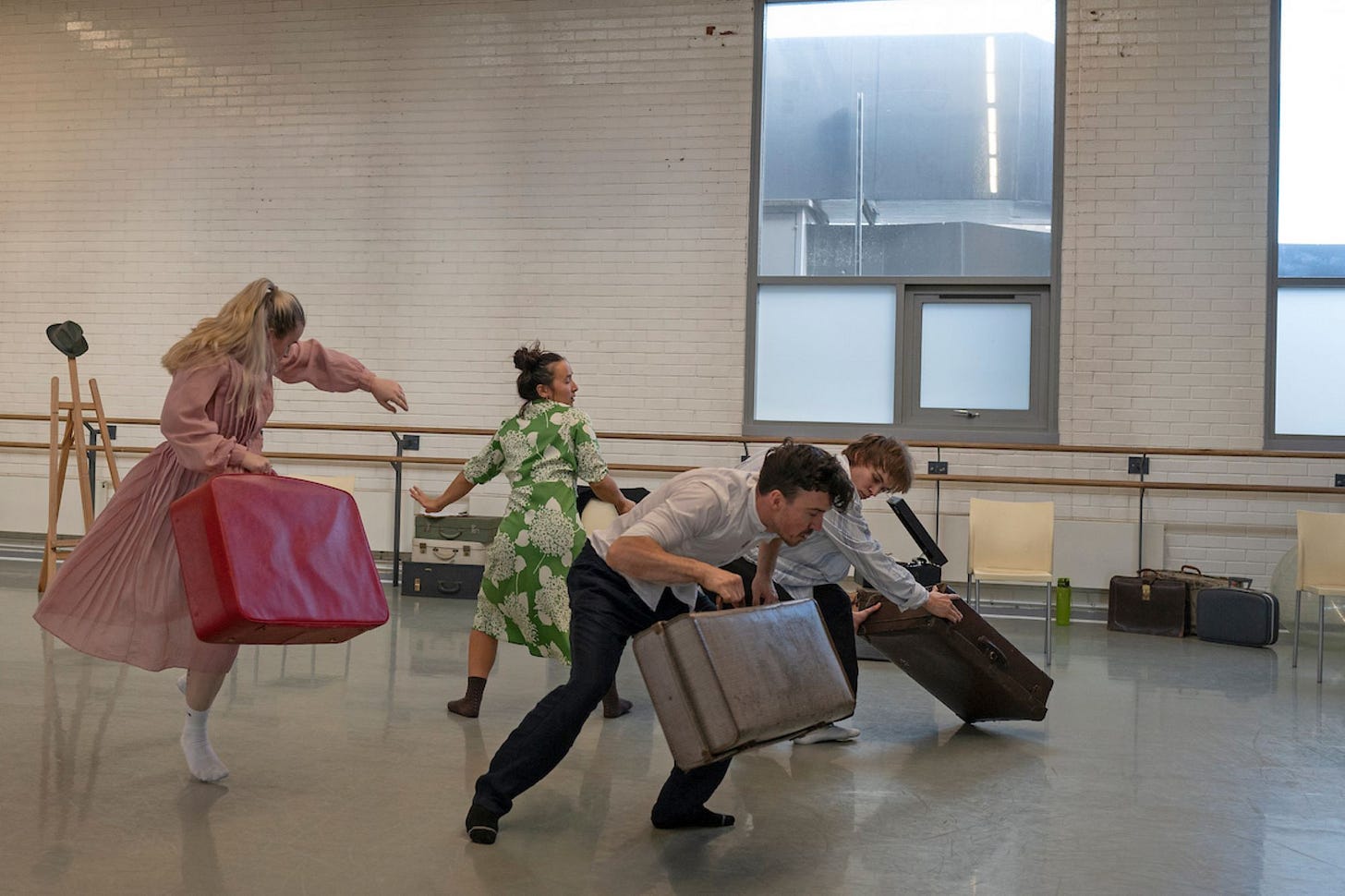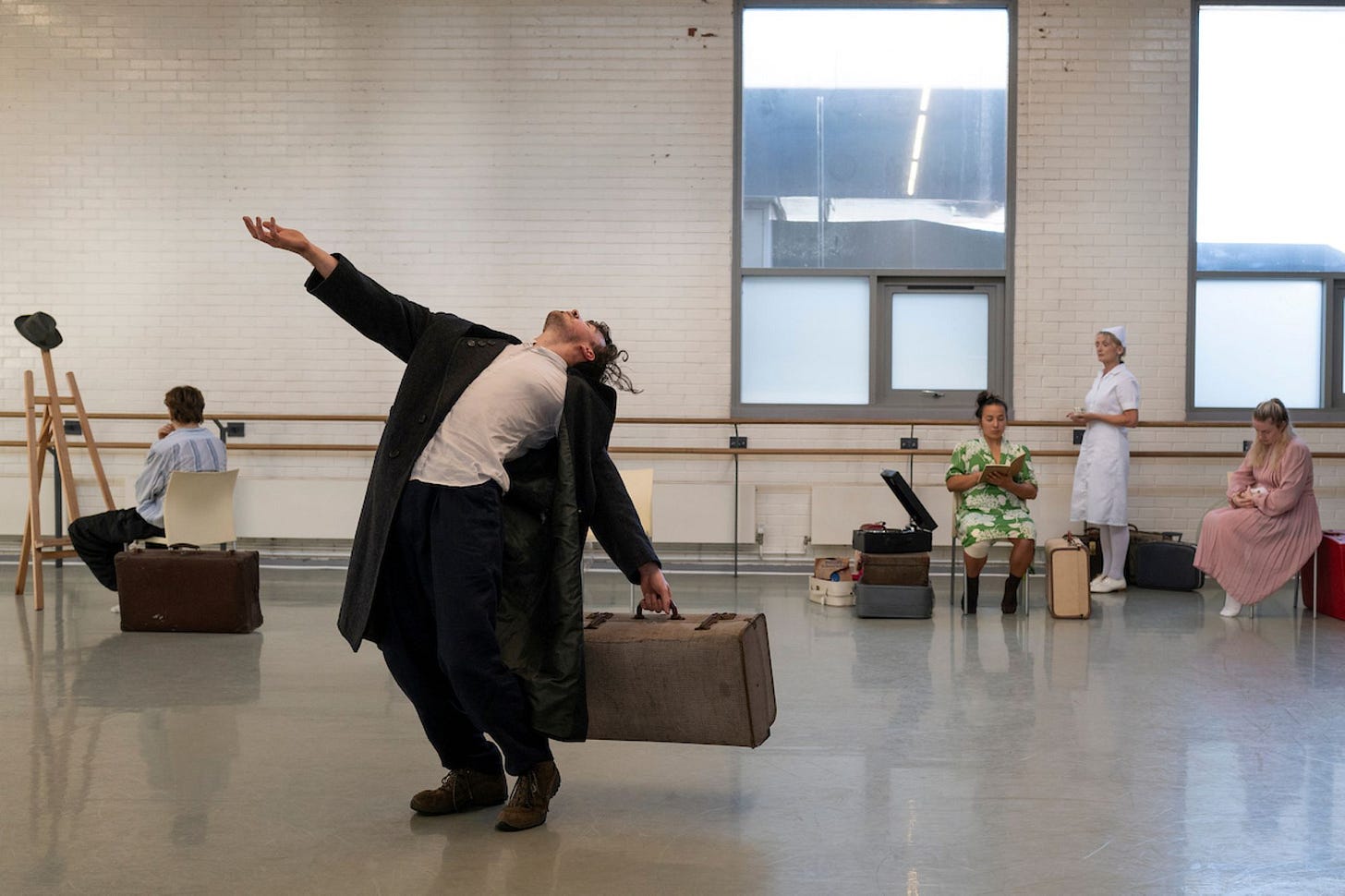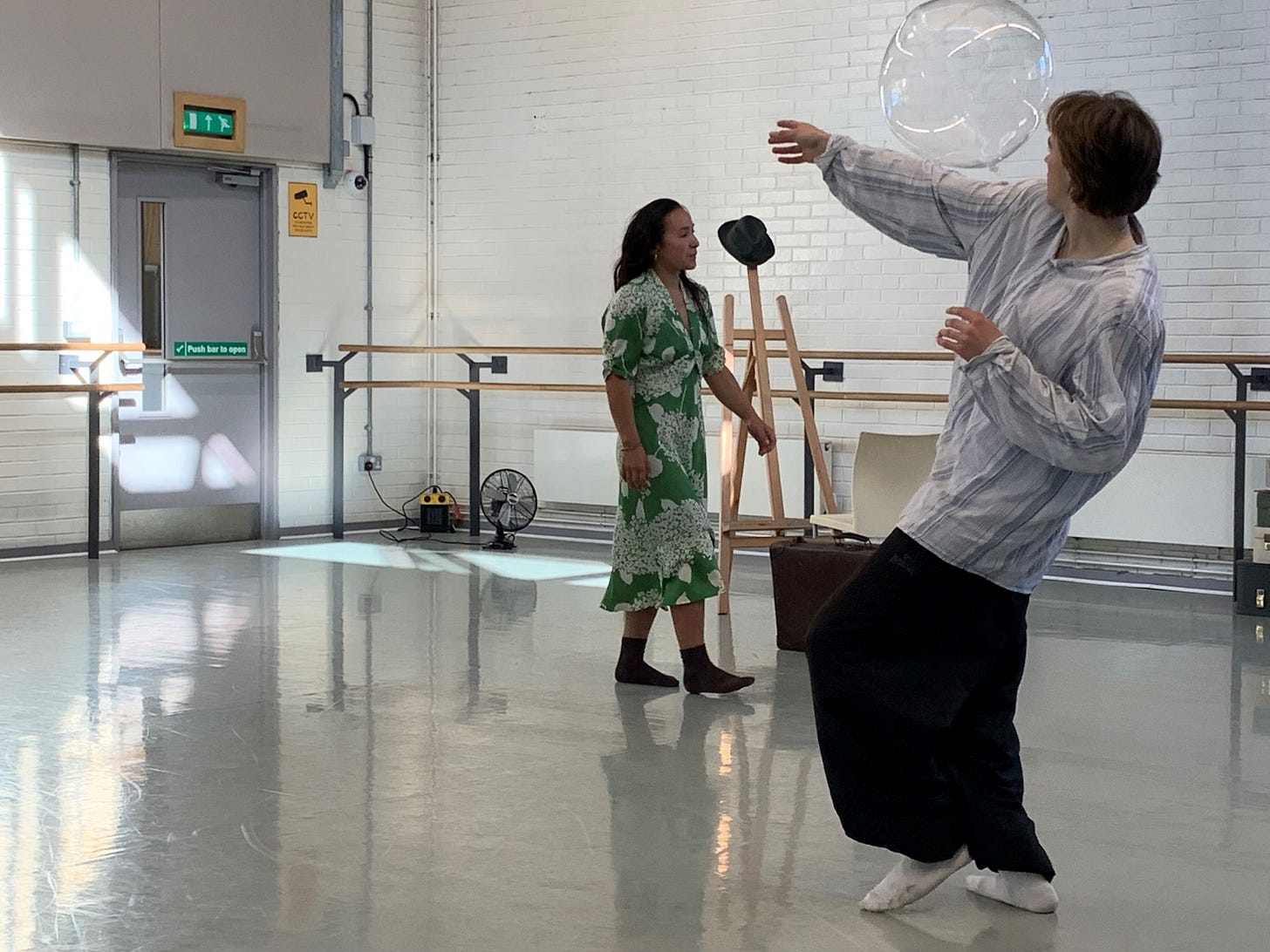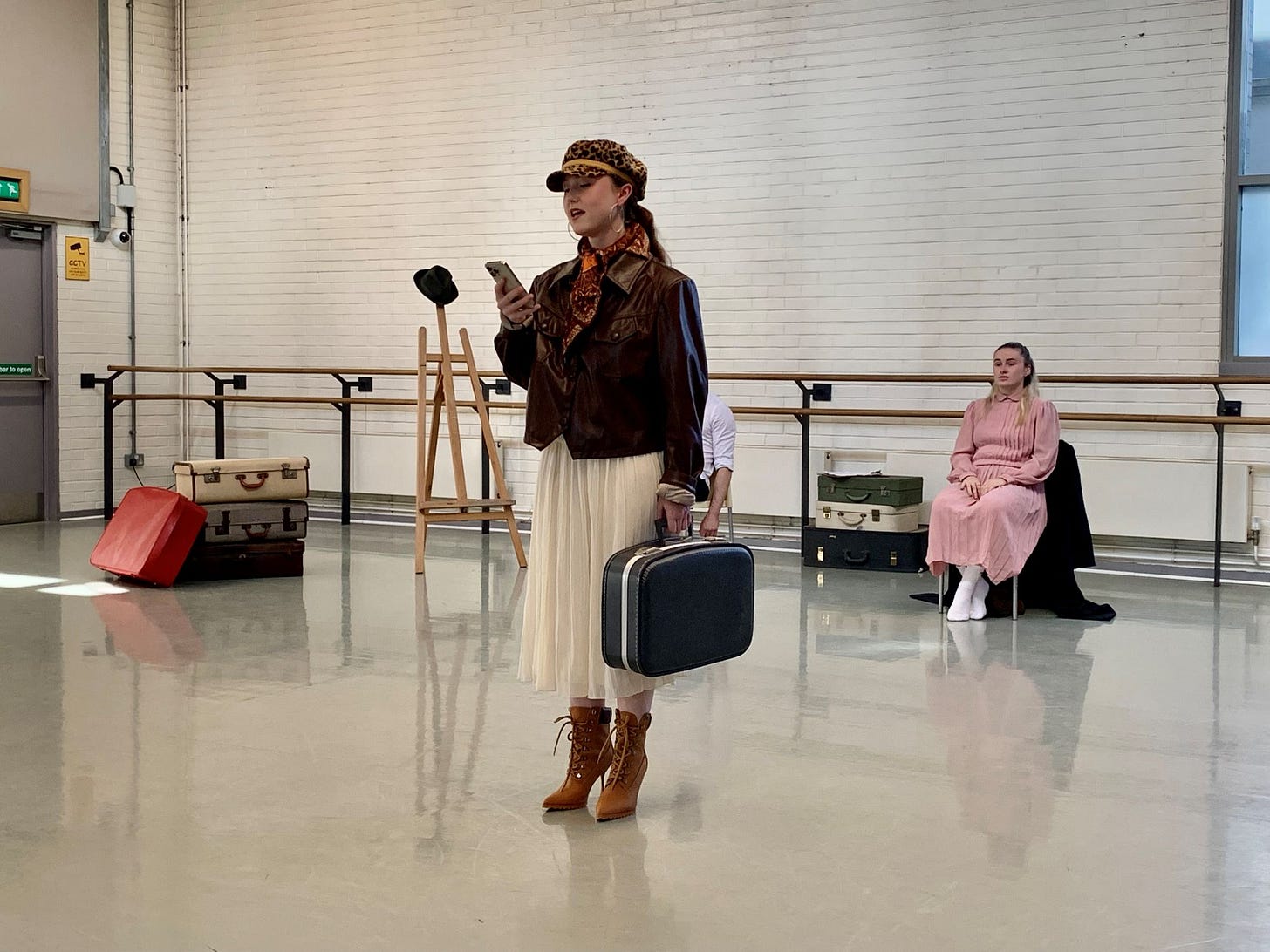How suitcases found in an attic have moved people to tears
Photographer Jon Crispin attends world premiere
I confidently predict some sniffles, maybe some tears, during the first tour of Michael Heatley’s unmissable dance production, Suitcases.
Even during this week’s dress rehearsal at Dance City, it worked its magic. It’s a succession of catch-the-breath moments, a study of the human condition when things break down.
In its beauty and intimacy, expertly conveyed by a cast of six – four dancers, an actor and a singer - it will move anyone with a shred of empathy. There but for the grace of God…
The production belongs to Michael and his Hit the Ground Running Dance Theatre Company, which has a special interest in mental health, but the story of Suitcases goes back much further.
This is that rare thing, a dance performance inspired by photographs – taken in this instance by Jon Crispin, an American who gained special access to a famous psychiatric institution in New York State.
It opened in 1869, a vast complex known as the Willard Asylum for the Chronic Insane.
In 1995, when in the process of being closed down, a staff member called Bev Courtwright was tasked with entering every building to determine what items could be repurposed or sold and what should be thrown away.
Jon can take up the story. Having travelled to the North East for the inaugural tour (surely there will be others) of Suitcases, he was at Dance City for Wednesday’s dress rehearsal.
“Bev, who worked at the Willard, as her parents and grandparents had done before her, went up into the attic of what was then the sheltered workshop building.
“She put a key in a door and opened it… and bear in mind this is a rural woman not given to hyperbole… and she says she felt a sudden whoosh of energy.
“Looking inside, she says she saw purpose built racks with women’s suitcases on one side, just as in the wards, and men’s on the other.
“It turns out one of the curators from New York State Museum was on the grounds that day and she said, ‘Craig, you have to come over and see what’s here’.”
In many ways the attic was the end of a story… lots of stories. The suitcases, yet to reveal their contents, had belonged to patients who had lived and died at the Willard and been buried in the institutional cemetery, each of its graves marked only by a numbered disc.
“Willard was a place where most of the patients were chronically mentally ill and were institutionalised for their entire adult lives,” says Jon.
“There were 100th birthday celebrations at Willard for people who had been there their whole lives.
“The big question is – why were the suitcases saved?
“The families of patients, if they hadn’t completely forgotten about their relatives and were still in touch, were told, ‘You have a choice – you can either come and pick up the belongings of the patient or we’ll ship them to you, cash on delivery’.
“Many of these patients were originally from New York City. In 1930, getting from there to Willard would have been almost impossible. Even now it’s a five-hour drive.
“Some families clearly couldn’t make the trip or afford to receive the belongings. So another question is – why weren’t these things just disposed of?
“The answer I’ve come up with, and I’m very close to a lot of former employees of Willard, is that they really cared about these people and couldn’t bear to just throw these things away.
“So they built these racks, that were arranged in alphabetical order, and when someone died and the family didn’t come to claim the suitcase, it’d be stored away.”
Jon hasn’t been able to establish why this practice ended in 1965.
By the time Bev opened that attic door, the carefully stacked suitcases, some recalling lives that ended in the early years of the 20th Century, had lain forgotten for 30 years.
And so began another story.
Craig Williams, then curator of history at New York State Museum, having been told to select 10 of the suitcases and leave the rest, took matters into his own hands.
Says Jon: “He just ordered a truck and loaded all 420 suitcases into it and took them to the museum which then spent years cataloguing and conserving the collection.
“I photographed every one of them.”
This is a story that, in its fullest telling, would require a whole book. The process whereby the suitcases were gathered and photographed was not all plain sailing.
Even for Jon, who first encountered the Willard in the early 1980s and has photographed many such institutions, there has been a forest of bureaucratic red tape to be negotiated.
It’s perhaps to be expected when dealing with such sensitive subject matter and the offices of a state government. Even now there are things Jon is privy to which he asks me not to write.
He has become a point of contact for people who, alerted by the publicity generated by his photographs, seek basic information about relatives or ancestors.
A pair of twin sisters rang him from the cemetery one day to ask if he could direct them to a relative’s grave, marked by one number among many.
He started photographing the suitcases in 2011, given access to the collection by Craig Williams.
“I thought I’d stop after 30 cases but soon realised that to do justice to the whole legacy of these people, I really wanted to photograph the whole collection – and I wanted to photograph the process.”
Funded by a succession of Kickstarter fundraising campaigns which enabled him to pay an assistant, it took him six years.
Each suitcase was photographed as it had been wrapped by museum staff, then with the paper taken away and then again with its contents revealed.
It was, Jon recalls, with “glee and excitement” that he would unpack the contents, each item now protected in an archival bag within each suitcase.
Some of the suitcases were packed with items, others were empty. One just contained a toothpick. But each was a time capsule, a touching memory of a life lived at Willard.
“The earliest case probably dates from about 1910 and the last from the 1960s. I’m fascinated by design and by ephemeral objects, like a 1930s can of Colgate toothpowder,” says Jon.
“And these weren’t just objects that came with patients. There were objects people accumulated at Willard – diaries, correspondence from family members and also draft letters people had obviously written to friends, family and officials, such as, ‘Dear President Hoover, only you can get me out of this place’.
“But Willard was unique. It’s not in an urban area and patients were not confined to the buildings. One would write in his diary, ‘Woke up, smoked a cigarette, walked to buy 20 newspapers, walked back to Willard, sold the newspapers…’
“I think that’s another reason these objects were saved – because of the connection between the community, which is tiny, and this massive structure.
“Most of the people in Willard worked at the facility and the patients were out and about. Some employees said they’d come back from shopping and find so-and-so in the sitting room.
“There were films shown every week in the facility and townspeople would come, so there was a tremendous amount of interaction.
“Bev Courtwright told me she grew up thinking she had a lot of aunties because there were always women living in their house which was across the street from the facility.
“Someone would be doing well and Bev’s parents would be asked to take her in for a while.”
Jon’s suitcase photographs have touched people around the world.
“I’ve worked my whole life as a photographer and done all sorts of projects,” he tells me.
“I spent years photographing rural poverty in New York State and did a project on fairground architecture, and they’ve all achieved a level of success.
“But nothing like the suitcases. It completely blew up. There’s no other collection in the world like this, so people are fascinated.
“I often say I’m a conduit for the lives of those people. One thing I always say about my photography is that unless I feel something from it, I can’t expect others to feel something.”
That whoosh of energy reported by Bev Courtwright 30 year ago has never really abated.
Jon has given many talks about the project (and will do so again on this tour). A composer, Julianne Wick Davis, wrote a Suitcases-inspired song cycle which has been performed many times in the United States, with predictable results.
Jon says he took his brother, a corporate-minded and outwardly unsentimental soul - chalk to Jon’s cheese - to a performance and was astounded to see him crying.
When Michael Heatley was directed to Jon’s online Willard Suitcases exhibition, he was similarly moved… and acted fast, sending an email to Jon who replied that he would be visiting London shortly.
Michael took the train down, talked to Jon for 90 minutes, earned his trust and respect, and subsequently travelled to the United States to visit what remains of the Willard.
That was just before the first Covid lockdown which meant his first planned dance tour of Suitcases was cancelled and a digital version released online instead.
This, then, is the first chance anyone is getting to see the story of the Willard suitcases told in dance, augmented by words and song.
Dancers Connor Gribben, Lila Naruse, Jonny Curry and Jessie Doran perform in the piece along with actor Zoe Lambert and singer Dayna Dixon.
Michael says he had been struck by the many apparently creative souls who had ended their days in Willard and had focused largely on them.
One of them, Irma, had been an opera singer, as evidenced by the programmes and documents found in her suitcase.
Ethel was a talented seamstress, Dmytre an artist. Lawrence, on the other hand, dug the graves for 40 years at Willard and presumably ended up in one himself. His suggestion that he should be paid went unheeded.
Jon, who spoke to the dancers after the rehearsal, seemed impressed, and he explained that while some patients had left nothing behind but a suitcase, one had left enough to furnish a home – and also a car which had been sold.
So many stories…
Suitcases is to be premiered – appropriately – at St Nicholas Hospital in Gosforth (‘St Nick’s’ with its history of treating mental illness) tonight (September 19 at 7.30pm).
Subsequent performances will be at The Exchange 1856, North Shields (September 25, 7.30pm), Victoria Baths, Manchester (October 2, 7pm) and Queen’s Hall, Hexham (November 6, 7.30pm).
Tickets can be booked via the Hit the Ground Running Dance Theatre Company website.












Congratulations to Jon Crispin, Michael Heatley and the entirety of the wonderful Hit The Ground Running Dance Theatre Company for their sensitive and moving production of Suitcases. The world needs more work like this, to spark a resurgence of human feeling and respect for those whose misfortunes are so easily overlooked by society - indeed, actually buried by the weight of years and the very earth itself. Stunning visual message for us all. Thank you so much.